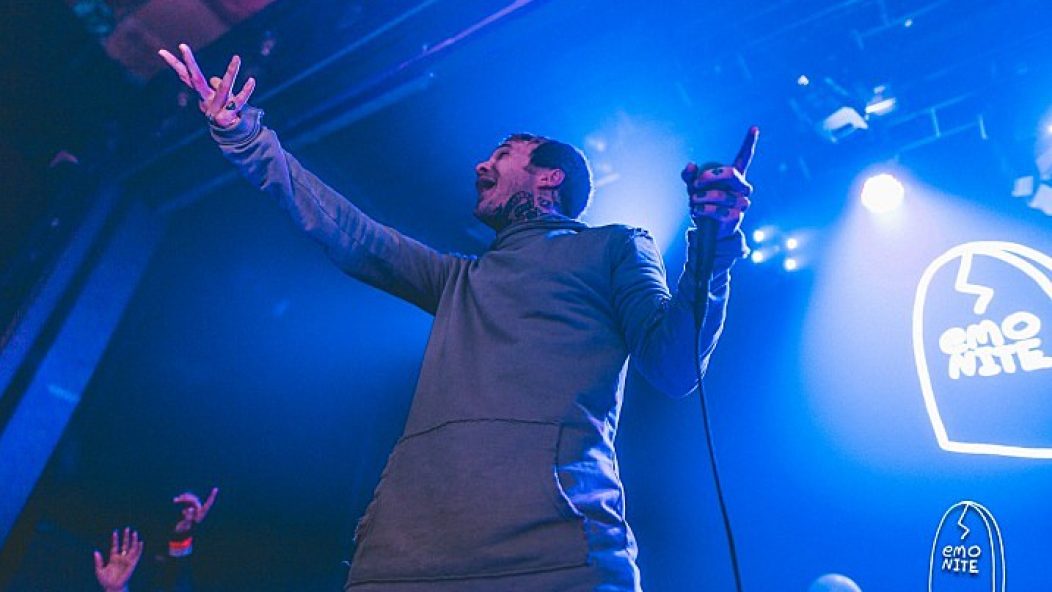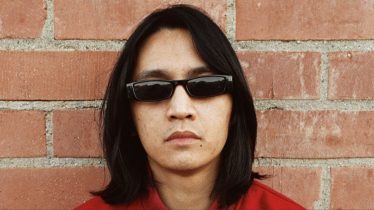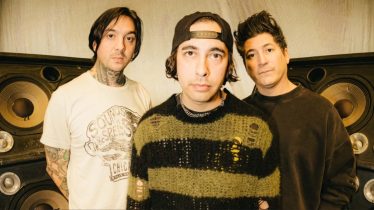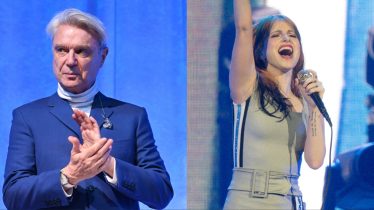
Chiodos’ Craig Owens and the Emo Nite founders explain what makes the emo scene so special
[Photos by: Ian Bell]
When Morgan Freed, T.J. Petracca and Babs Szabo put on their first Emo Nite in a small bar in Los Angeles three years ago, they didn’t anticipate it’d become one of the biggest events for millennial nightlife on the West Coast. And just a couple of weeks ago (May 4, to be exact), it took over NYC, completely filling Webster Hall and attracting some of the biggest names in the scene.
So what happened?
Read more: See photos of From First To Last’s comeback show, MGK, more at Emo Nite
“There are other emo nights,” Freed tells AP over the phone, “but what I think is different about ours is it’s a party that didn’t exist. We had Halsey and Machine Gun Kelly, who are No. 1 right now in the country, also with the Spill Canvas. They’re all on the same platform and they’re all on the same page. It’s really a community effort to make it the most fun night ever.”
Not only are the artists on the same page, but the barrier between artist and fan starts to dissolve as well. “We encourage people to come on stage,” Szabo says. “We always let the venues know that we don’t want a barricade so that there’s no wall between an artist and the fans. They can come up and take photos with them and dance with them. I think that’s why people are drawn to it. Especially in LA, it’s hard to find a place where there are no VIP tables or backstage passes.” And at the NYC Emo Nite, Chiodos’ Craig Owens and Emarosa’s Bradley Walden played both roles: artist and fan.

Like many of his fans, Owens was that kid who wore his Thursday T-shirt to school almost every day. He was that kid who always hopped on the My Chemical Romance online message boards. Even though he himself was one of the key figures of screamo, he’s just a dude who can connect with fans about jamming to “No Hardcore Dancing In The Living Room,” even if he’s the one who wrote it.
“[It’s] the celebration of a culture,” Owens says of Emo Nite LA, “that many of us have probably moved on from, some of us probably still thoroughly enjoy, but both alike can come together and celebrate the hard work of amazing musicians that changed the world with their music. [They] created a world for people all over the world to feel like they can be themselves; to put on headphones while they sat in their bed upset with life and make them feel like they belonged and that someone understood them.”
That’s what makes emo music so special: that support system.

“Emo, to me, are these bands that you listen to through sad times and happy times and kind of [are] there for you no matter what,” founder Szabo says. “There are a lot of artists now that make hip-hop music or make pop music that were influenced by emo and pop punk growing up. I almost feel like there’s an emo influence in all genres of music now.” A genre of music that was once mocked (if someone called you “emo” in middle school, it was usually an insult) is now celebrated. It fostered a bonding experience for people who once felt isolated and angry at the world—and still does, if Emo Nite is any indication.
“We all grew up listening to this music,” Bradley Walden says inside the walls of Webster Hall. “In that regard I think that it’s really special. Some people look at it as a gimmick or just some people cashing in on emo bands. It gave us something to go do and feel a part of. It’s such a great place to connect. I don’t know why it didn’t happen sooner. It’s special. It’s ineffable. It’s not describable.”
As artists such as Matt Good (From First To Last) and MGK fade into the crowd of New Yorkers who surrounded them, this idea of community came sharper into focus. When the latter closed out his DJ set with MCR’s “Welcome To The Black Parade,” the entire venue sang along with incredible heart. The founders might not know where they’ll take the event from here, but they did agree on one thing: “It’s completely shaped everything that we do in our lives.”







